Before I went to Guédelon, I’d never really heard much about “experimental archeology.” For me, archeology seemed more a discipline based on pre-existing evidence – concrete objects, things you find in the ground or at the bottom of the sea. The interpretation of those objects is often open to conjecture (is this pottery shard part of a wine jar or was it a piece of the sculpture of some deity?), but in most cases you couldn’t really devise an experiment to prove the theory one way or the other.
As on so many subjects, though, I was wrong. There’s a whole formal branch of archeology devoted to testing our conjectures about how people lived and how they made things by trying to replicate the tools, processes, and ways of thinking that produced the artifacts unearthed by “traditional” archeologists.
The medieval chateau at Guédelon is just such an exercise in experimental archeology. Maybe you’ve visited an old castle or a medieval cathedral and wondered “How did they put those massive stone blocks into the walls? How do you build an arched doorway so it doesn’t collapse under its own weight? How could a building like this be designed without any pen, paper, or precise measurement device?” Guédelon is a 26-year project to document the answers to questions like these – and to expose everything they’ve learned through trial and error to the traveling public in the deep heart of France.
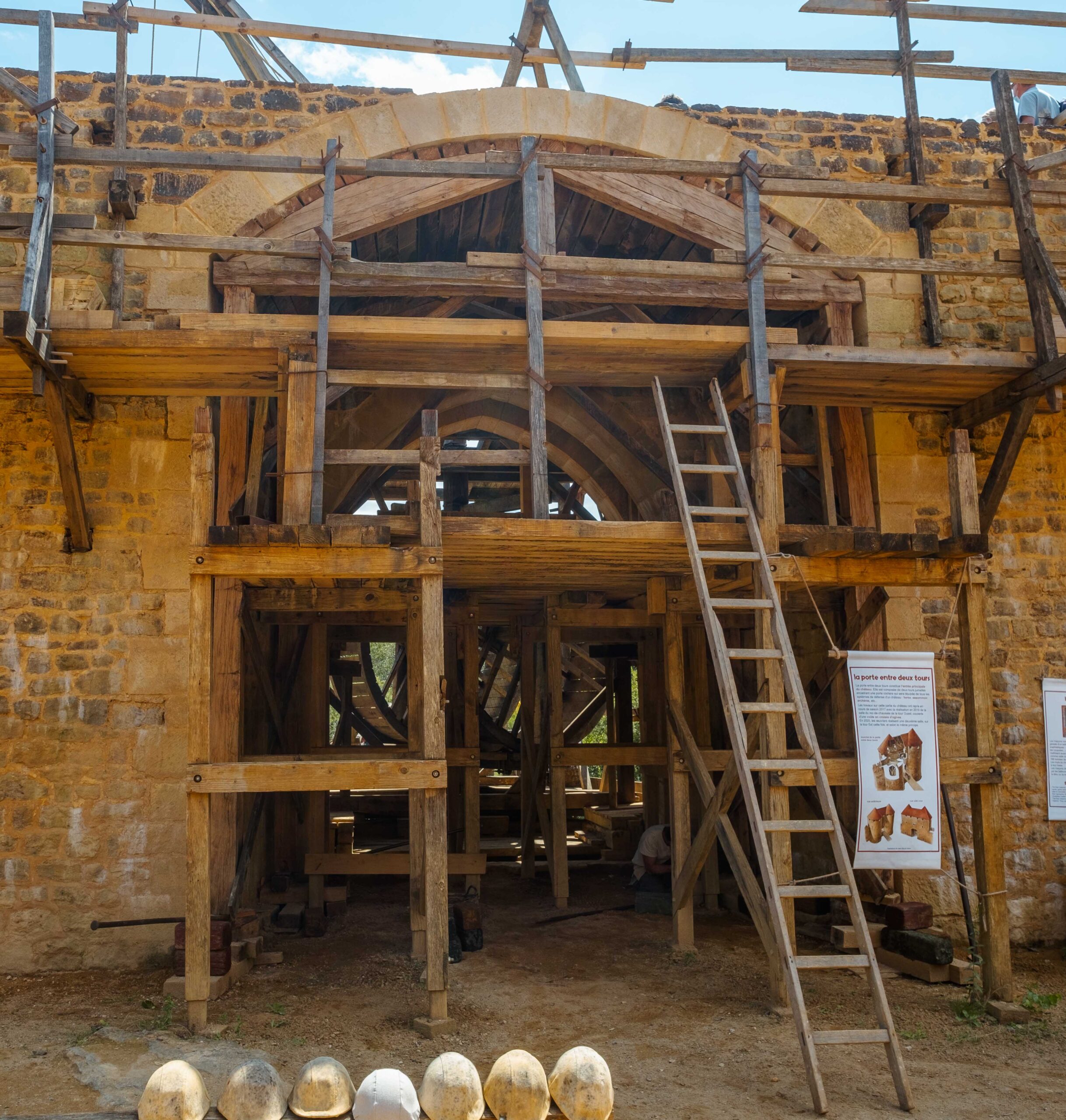
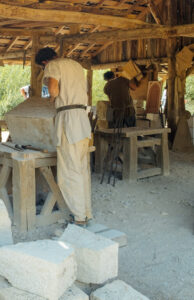
Guédelon is “medieval” – but NOT a replica!
Everything about this site is new (at least, since the project laid its first stones in 1997). And although it is authentically medieval in style and construction, it’s not a copy of any other castle. Rather, Guédelon is being built as though a minor French noble of the 13th century had decided to commission his new home to be constructed from scratch. To help make coherent decisions throughout the construction, organizers of the project decided to choose a reference date – 1228, during the reign of King Louis IX – to be sure they didn’t use any tools or materials that might have come later in history. To get the house’s functionality right, they also felt compelled to invent a complete backstory for this “little knight of Puisaye” and his family.
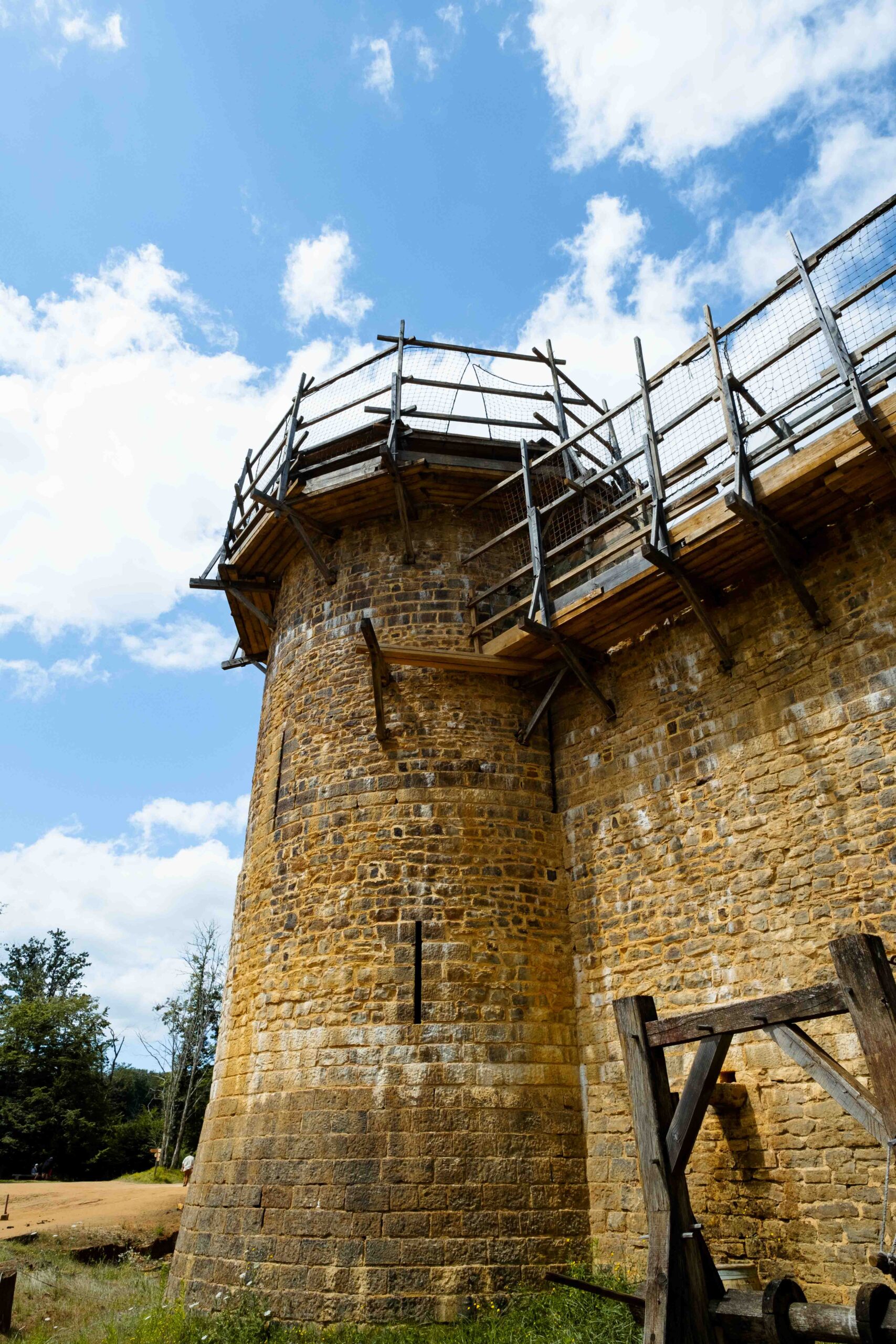
As an example of how the backstory drives the design of Guédelon: you might expect to find a full-sized chapel like those you’d see in other castles of the 13th century. Here, though, as the signs on the grounds say:
His relatively modest status in the feudal hierarchy, and his limited financial means, drove him to build a little chateau, far from the royal dimensions of chateaux like the Louvre in Paris […] He is not powerful enough or rich enough to build a separate chapel in the halls of his castle. So he installed an Oratory – a little prayer room – in one of the towers.
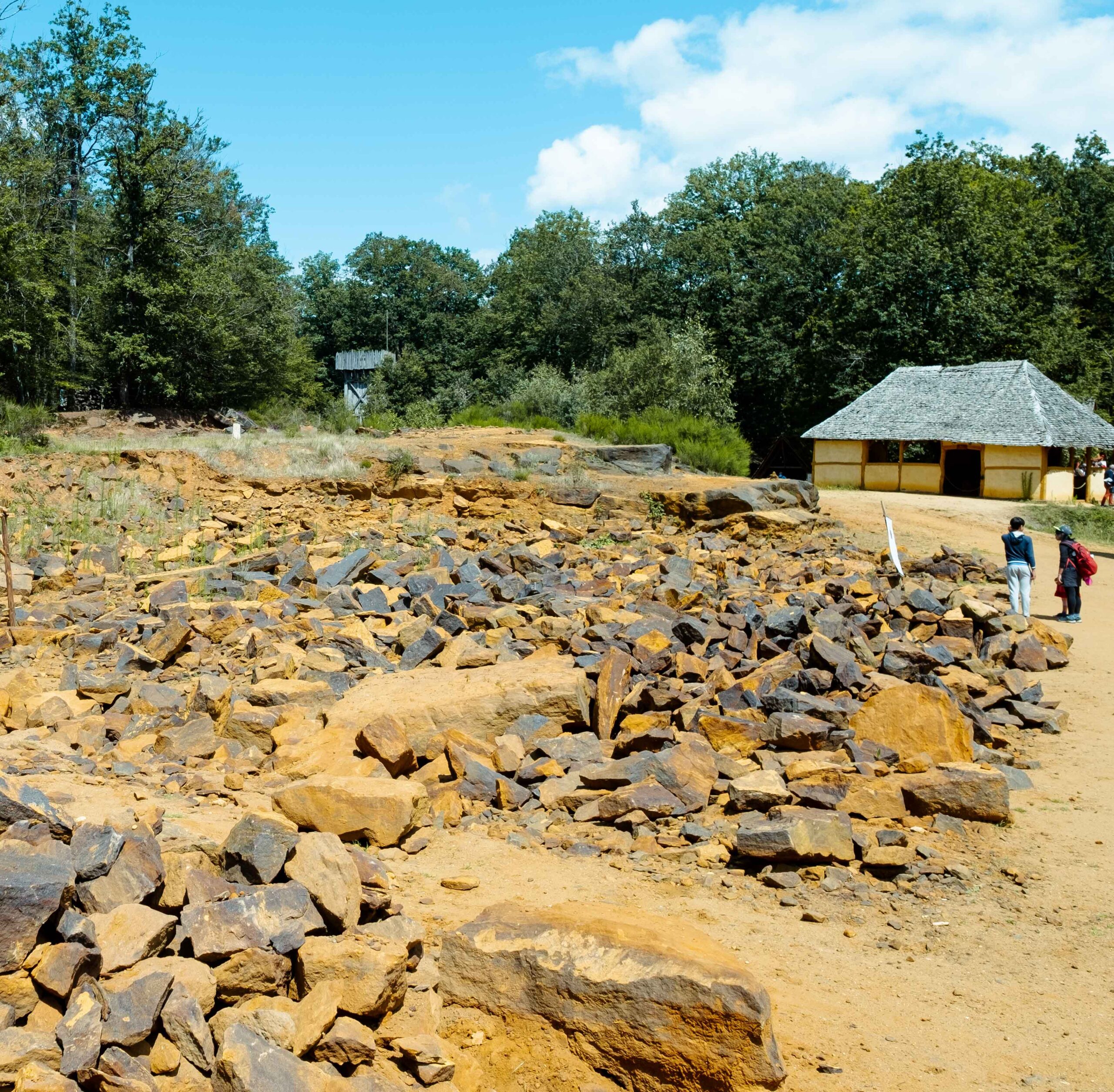
Finding “Un terrain propice”
Having settled the details of the family’s backstory, the builders of Guédelon had to do exactly what their medieval counterparts would have done first: find an appropriate place to put the chateau. That turns out to be more complicated than I first thought. Transporting raw materials was expensive and risky in the 13th century, so it was better to find “un terrain propice” – a favorable piece of land with access to everything needed for the construction.
The project found this site 2.5 hours southeast of Paris, 2 hours northwest of Dijon in the Burgundy region. And although they chose it first because of the rich deposit of sandstone that could be quarried for use as building blocks, they hit the jackpot in many other ways. They’ve also found plenty of good wood in the surrounding forest, clay for the castle’s pottery and tile work, iron ore for smelting, and pigments to be used in painting the walls.
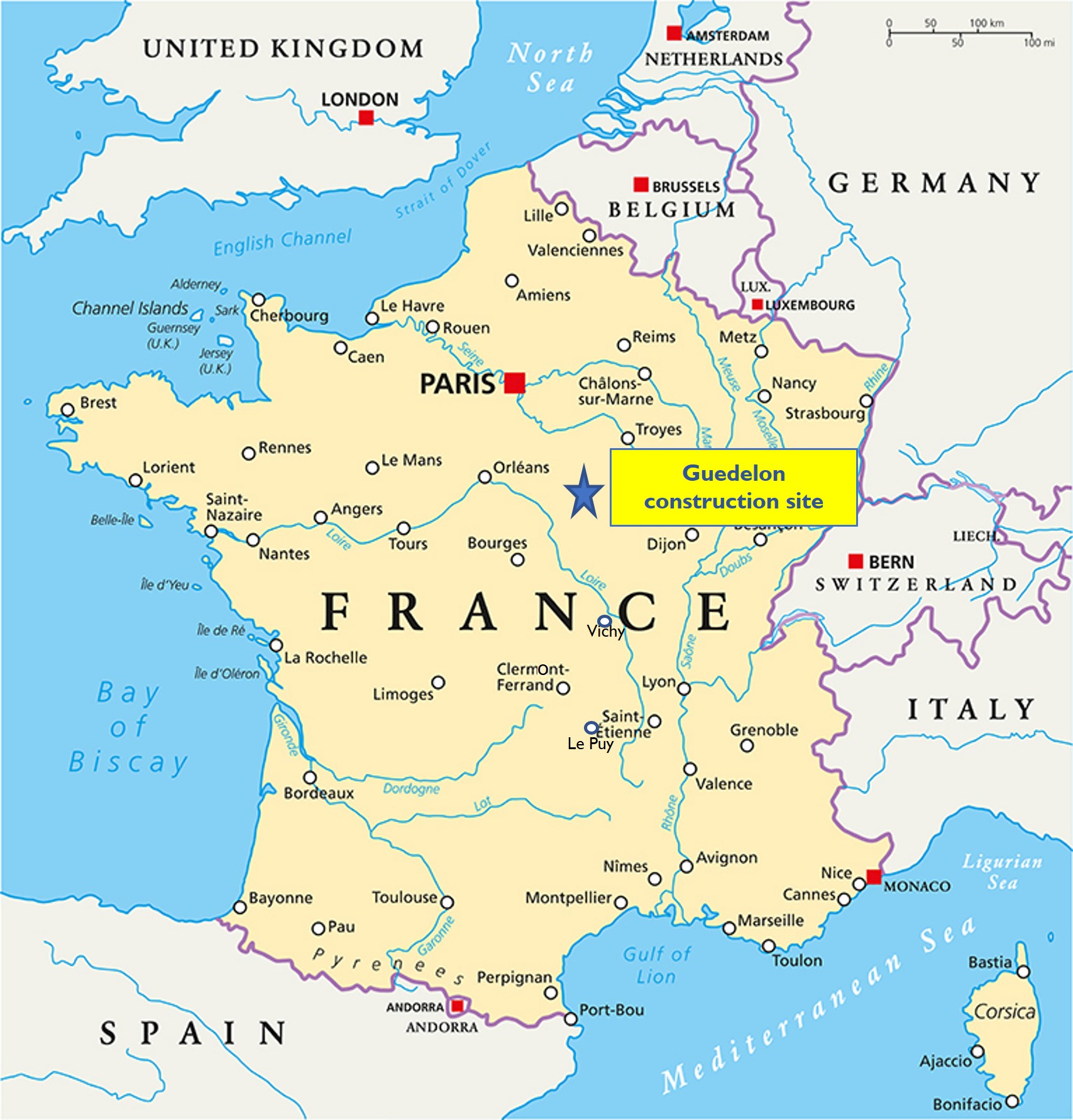
Solving the largest problems at Guédelon
The most fundamental problem to be solved in any medieval construction is weight. I recently read Cathedral, a remarkable book by Ben Hopkins. (Think of it as Pillars of the Earth if Ken Follett could write as well as Hillary Mantel – although that comparison is not adequate to describe the richness and historical interest of Hopkins’s novel.) In this narrative, one of the master builders describes the problem:
The block hovers above the height of the wall. The treadwheel boys slow to a halt. The stone sways ever so slightly. And then is still.
Weight is balanced, in weightless air.
Now is the most dangerous time. A mistake and all can tumble to the dust below.
“All hands!” Reaching out, vertiginously, pulling the ropes and securing the block to sit exactly over the wall. Judgement of eyes, hands. Rettich offers a prayer, crosses his heart.
“And easy . . . down!”
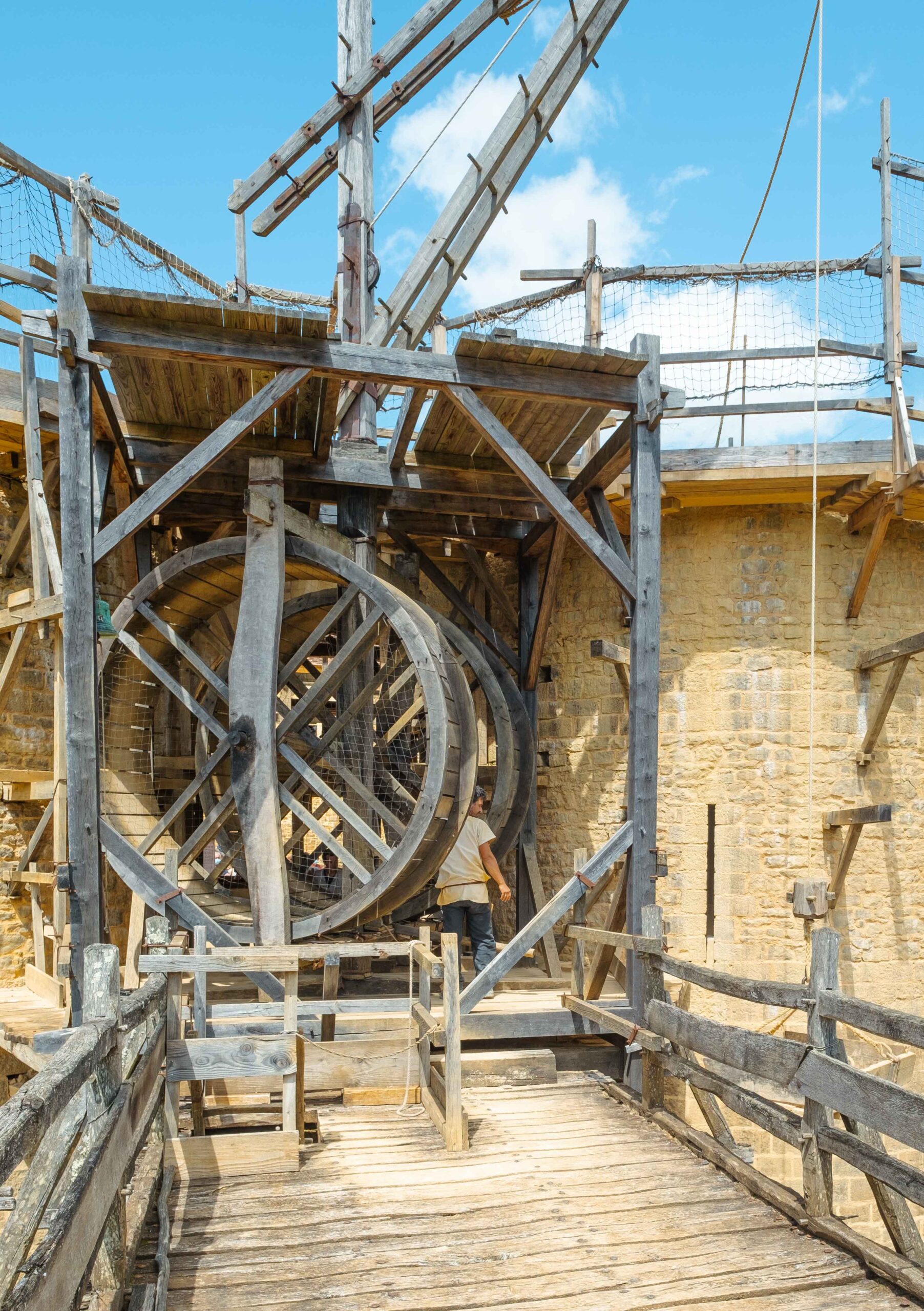
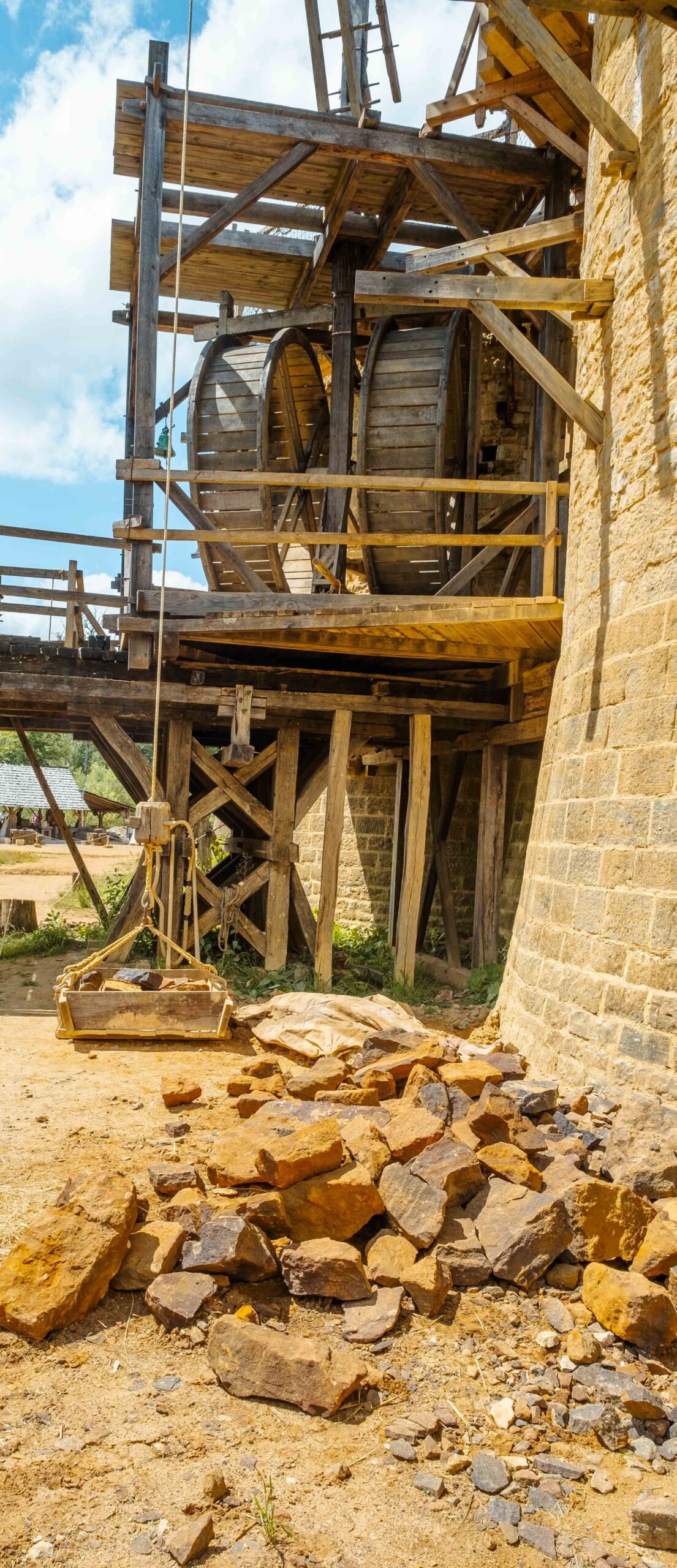
With a groan of ropes, the block is placed. Final adjustments, and then its Weight is given back to it once more. Rock transforms from weightless air to heavy stone. The mortar seeps, the lewisson eases. Pressure sighs its release. Weight runs down the wall, forcing downwards, to the Square, to the Graves, to the Crypts and Foundations, and back into the Earth whence it came.
And then it is gone. There is a new equilibrium. And the stones of the Nave Wall have a new companion.
The builders take a moment, look at each other, pat shoulders, wipe brows.
Ben Hopkins, Cathedral (Europa Editions: Kindle Edition)
So the most remarkable part of this construction is also the most basic: how to cut the massive stones and wrestle them into place without everything crashing back down to earth. And on this point everything at Guédelon is completely open and obvious. You can visit the quarry where unfinished rocks are loaded onto horse carts; you can watch in the stonecutter’s workshop as they are hacked down and refined into finished building stones. And you can watch the whole back-breaking process (I did, for almost an hour) as men on treadwheels slowly raise each stone into its place along the walls.
“Free of the masons’ upstretched fingers, the stone now inches its way up the towering wall. In the treadwheel they walk, keeping rhythm, step step step step. If they should stumble, then the block will plummet, the wheel will spin and dash them without mercy. Men have died in this way, too many times.”
Ben Hopkins, Cathedral
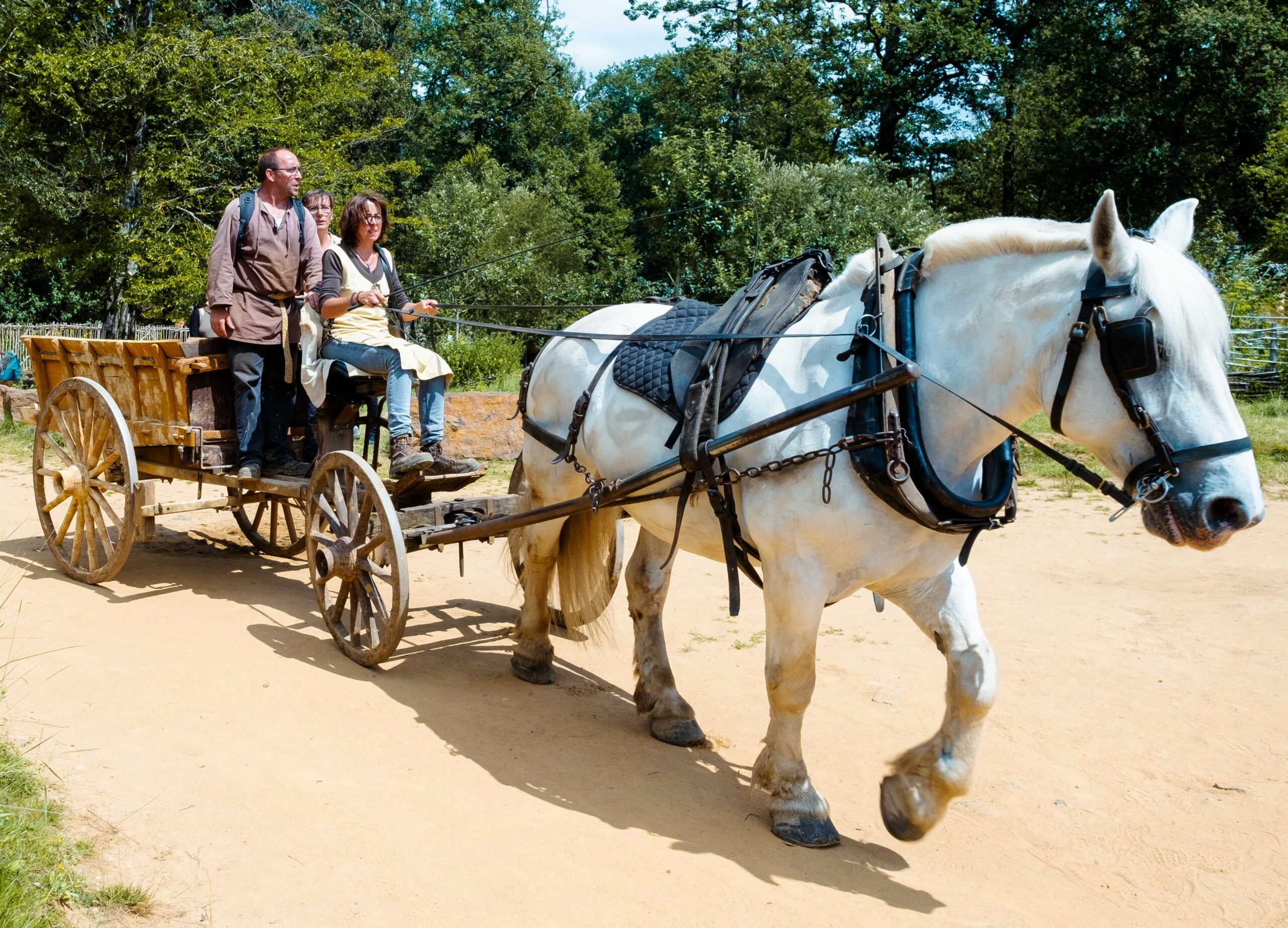
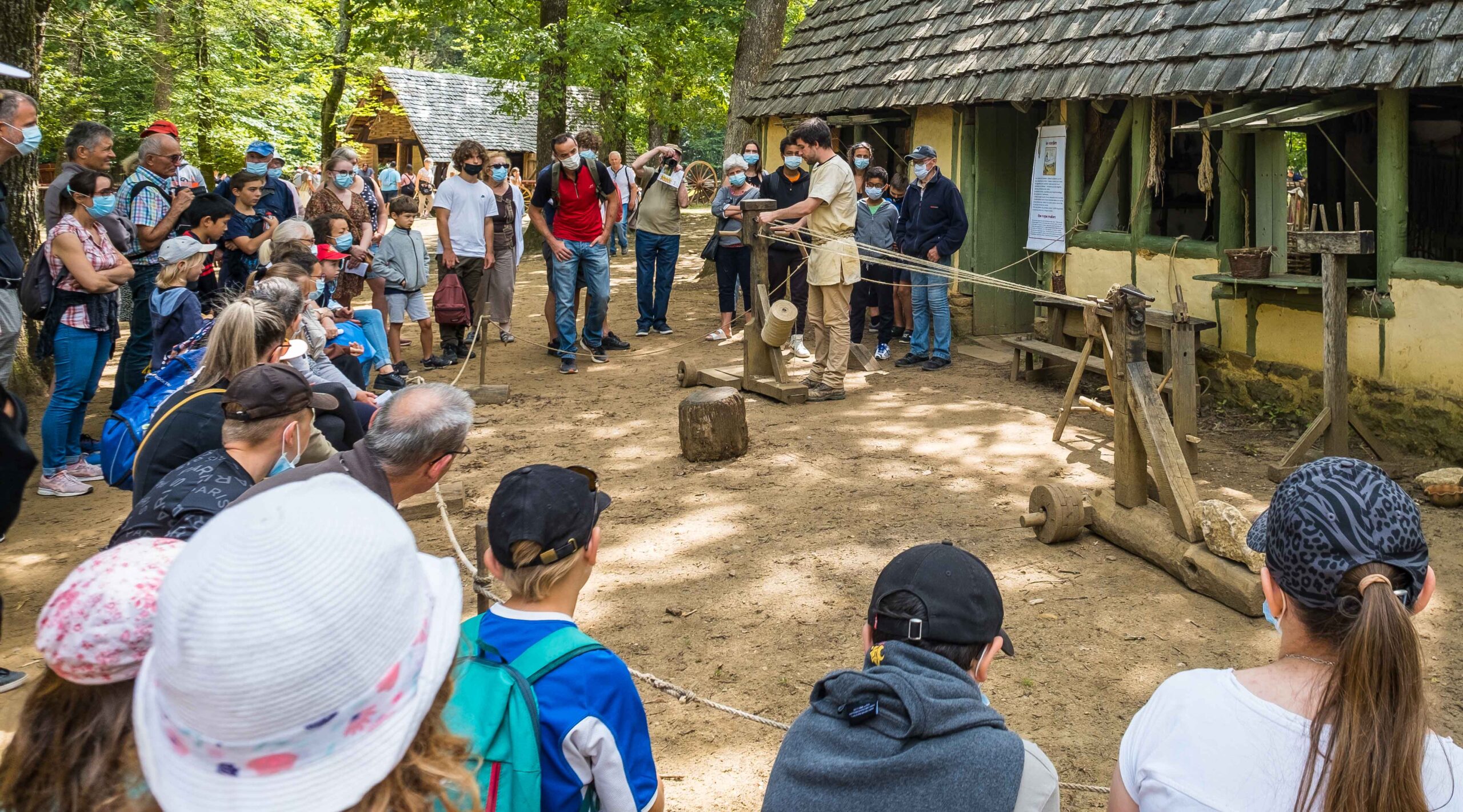
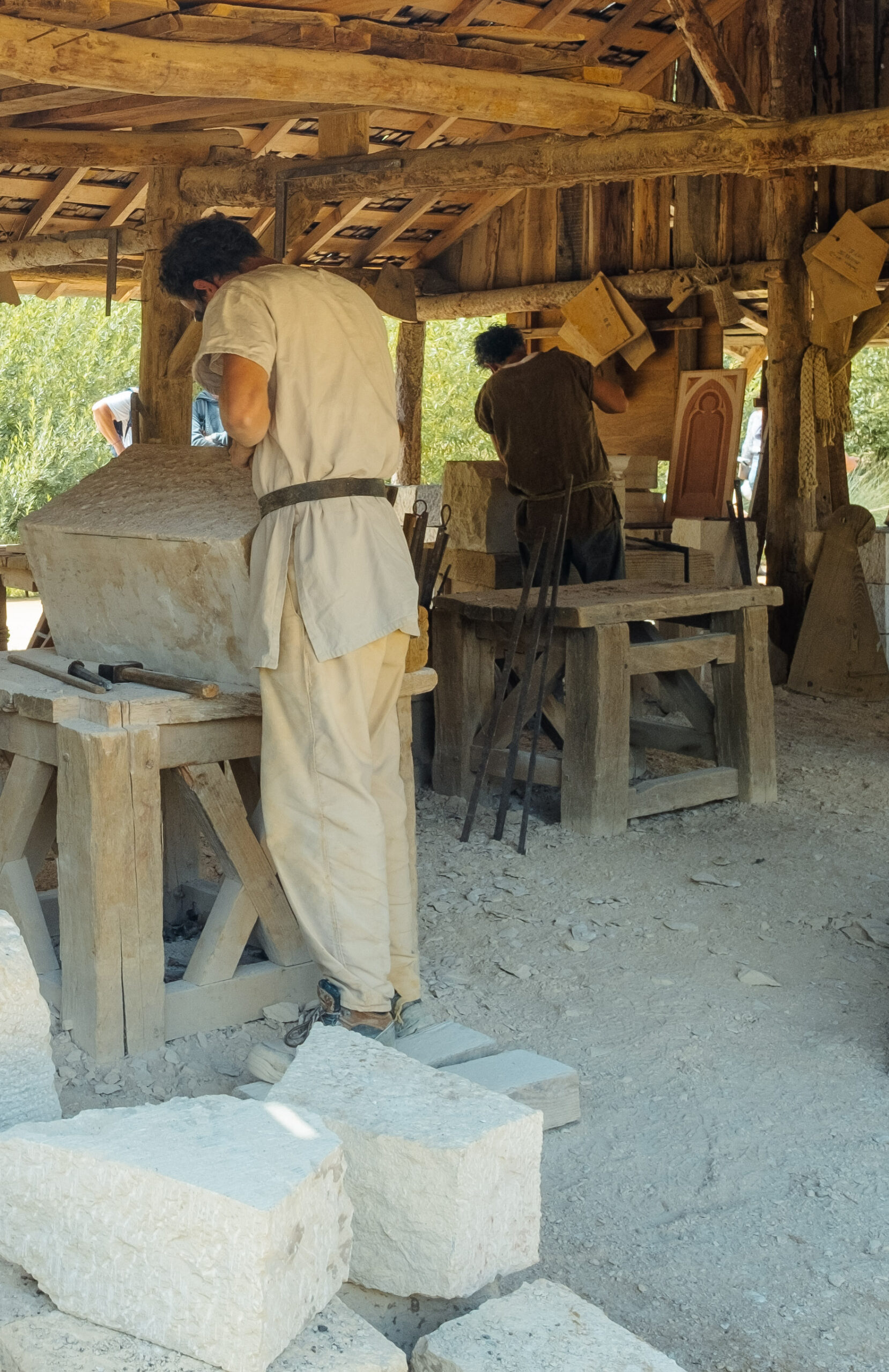
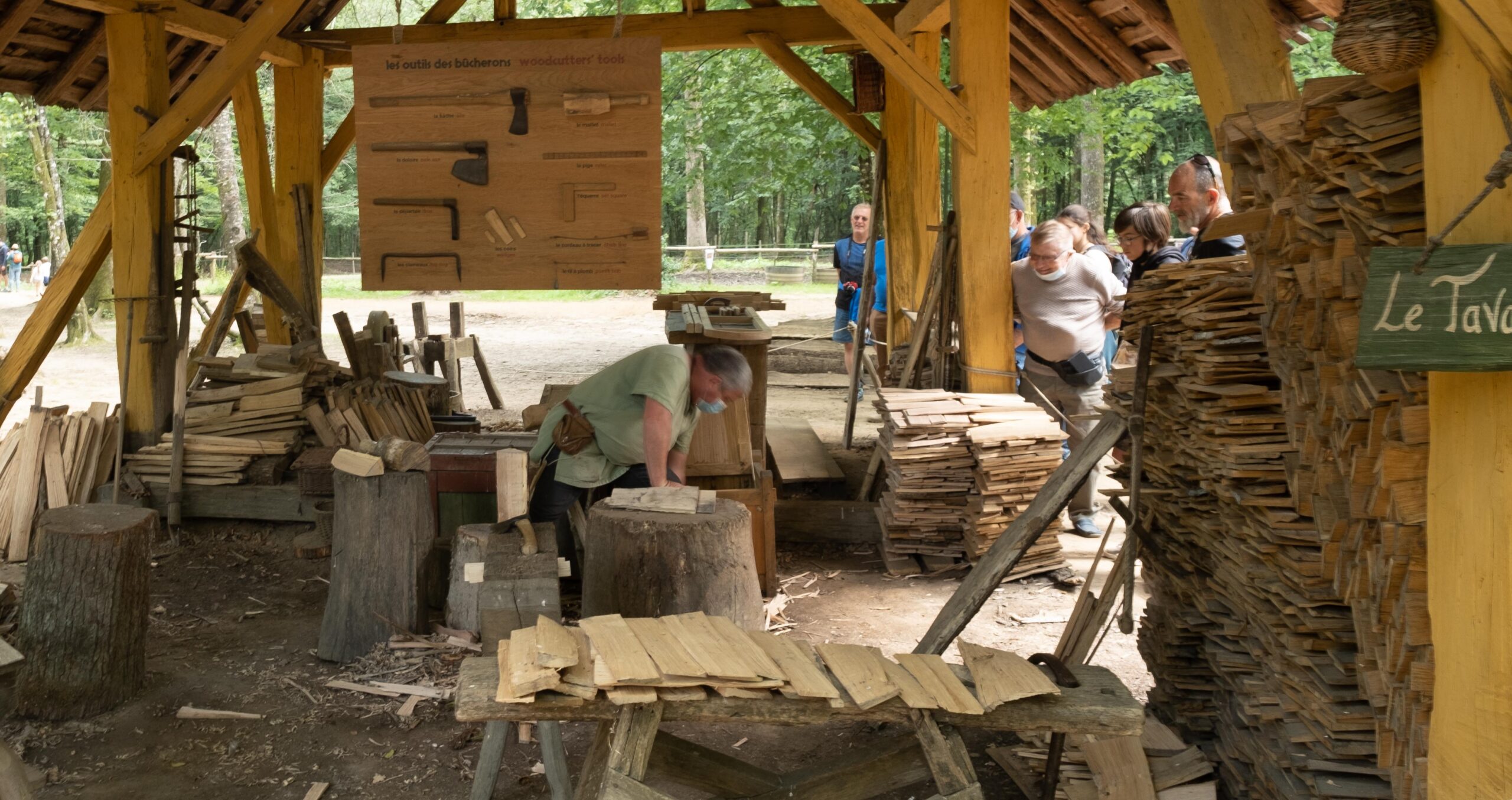
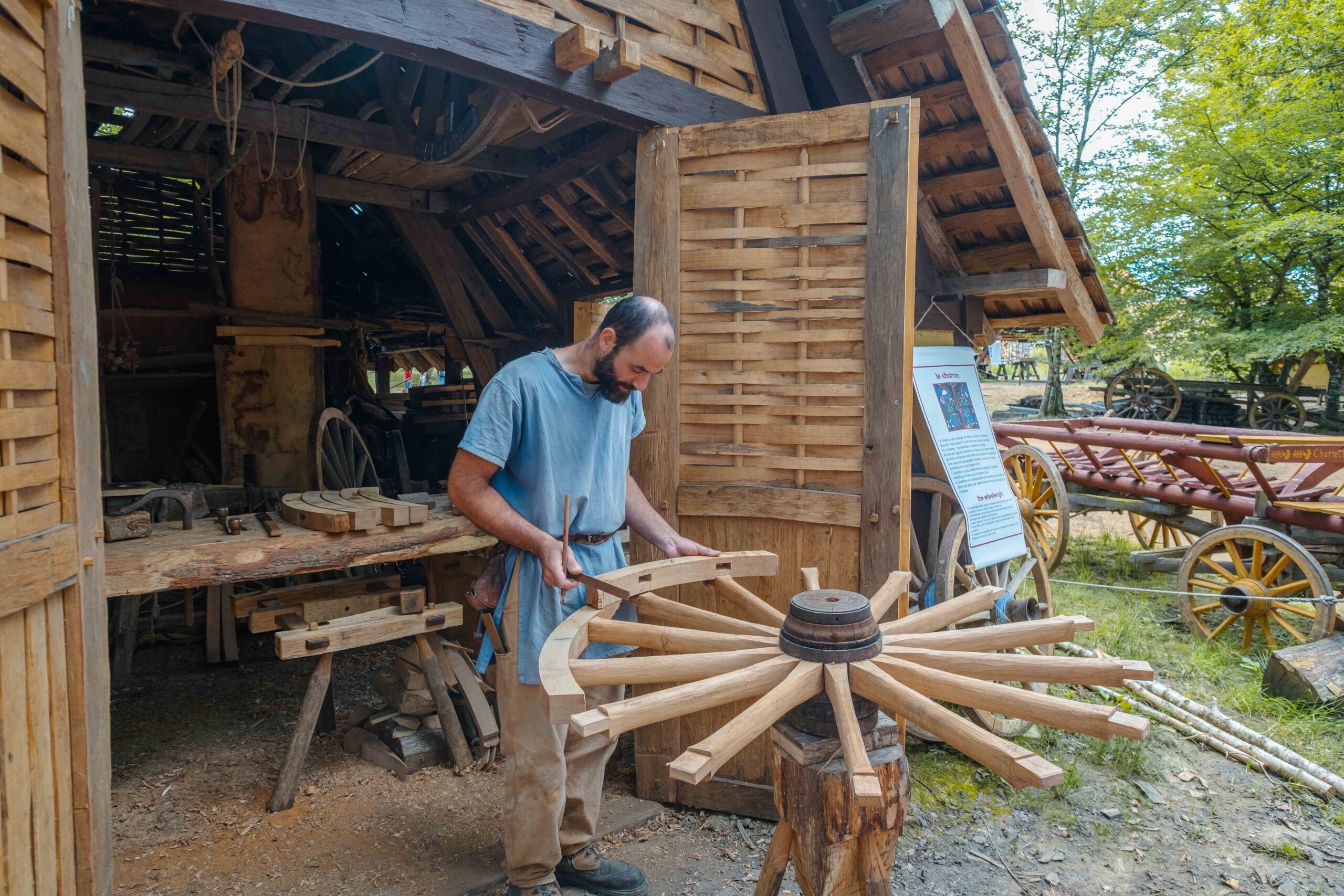
There are other parts of the process just as complex, just as necessary to this remarkable enterprise. You can visit the woodsman’s workshop to see support timbers being shaped and thousands of shingles being cut for the roof. You can watch a wainwright slowly assembling wheels for the crew’s horse carts. A young cordier spins rough twine into the ropes that are essential to Guédelon’s medieval machines. Depending on when you go, you can even work “hands on” in one of the ateliers responsible for creating the castle’s raw materials. The project’s managers take great pride in this self-contained approach to building everything needed for the castle:
[B]y gathering the materials which nature has provided, we can, just as a bird builds a nest, build in an environmentally respectful way. Beyond building a castle, Guédelon has emerged as a way of exploring how practical skills and traditional common-sense ways of working can be revived to build and create in the future.
…then there’s the question of architecture
All the emphasis on distributing weight correctly in a medieval building implies a good practical knowledge of physics, likely acquired over generations of trial, failure, and trial repeated. The same kind of general knowledge of applied geometry and good drawing skills were also required for getting the overall design of the building right. Usually this was the responsibility of a master mason. But this would not be “computer-assisted drafting”; in fact, it wasn’t even “drafting” at all, since most of the design work was done, not on paper, but on wax or in a box full of sand.
That’s the approach they are taking at Guédelon. During my visit I stood and watched in awe of the drawing skills of the designers working in the dirt courtyard of the castle as it rises around them. Using only basic tools – a straight stick used as measuring rod, a carpenter’s square, and a compass, they sketched out the next phase of the project. But I couldn’t help wondering “what happens if it rains? Or if a strong gust of wind blows through the yard?” The answer, as with most aspects of medieval construction, is “they are exceedingly patient”. It’s a patience that necessarily extends over many generations (as described in Follett’s Pillars of the Earth or Ben Hopkins’s Cathedral).
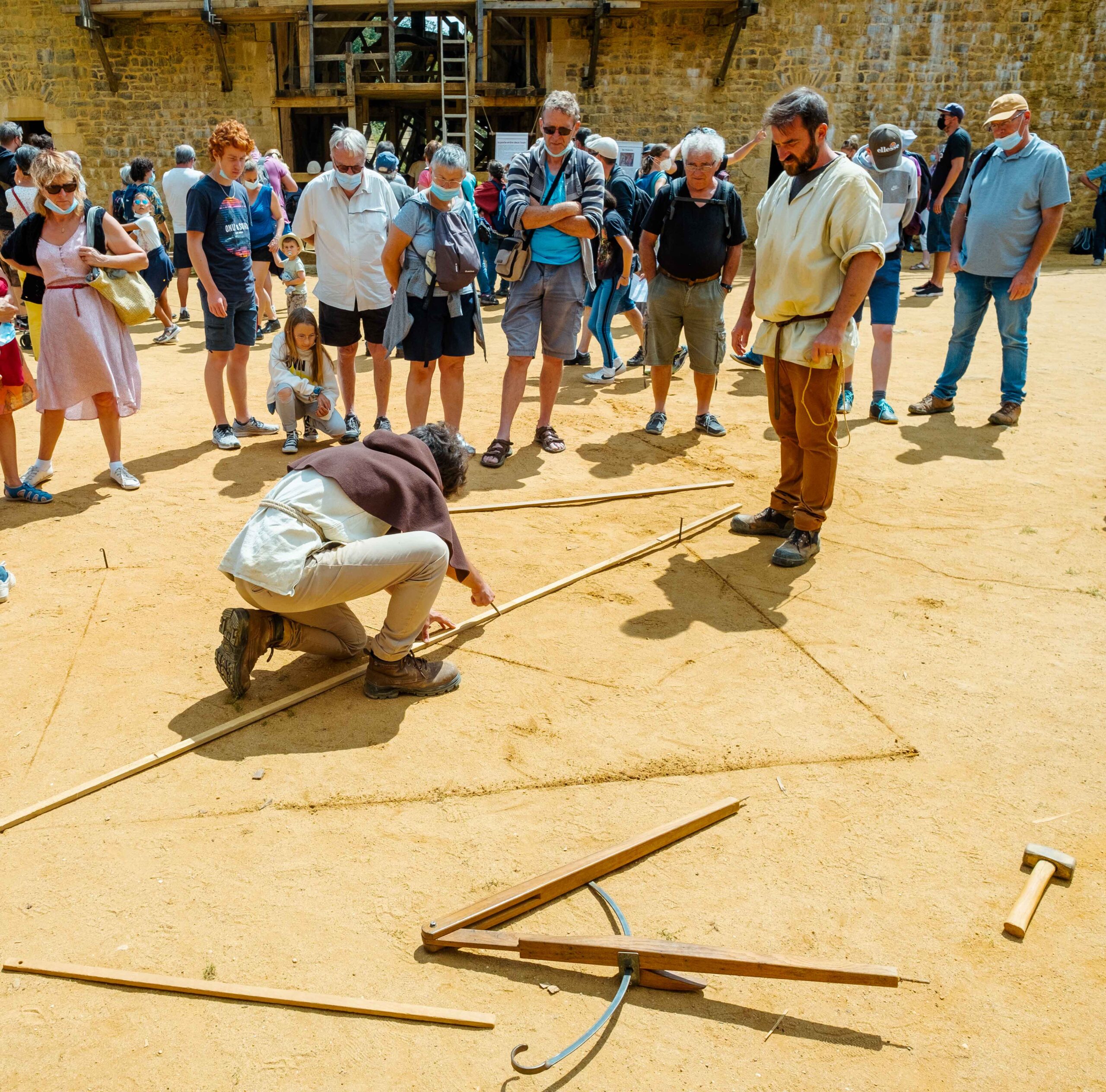
But it’s a patience that must also be exercised day to day in an environment where everything can change unexpectedly and where change must simply be endured rather than mastered.
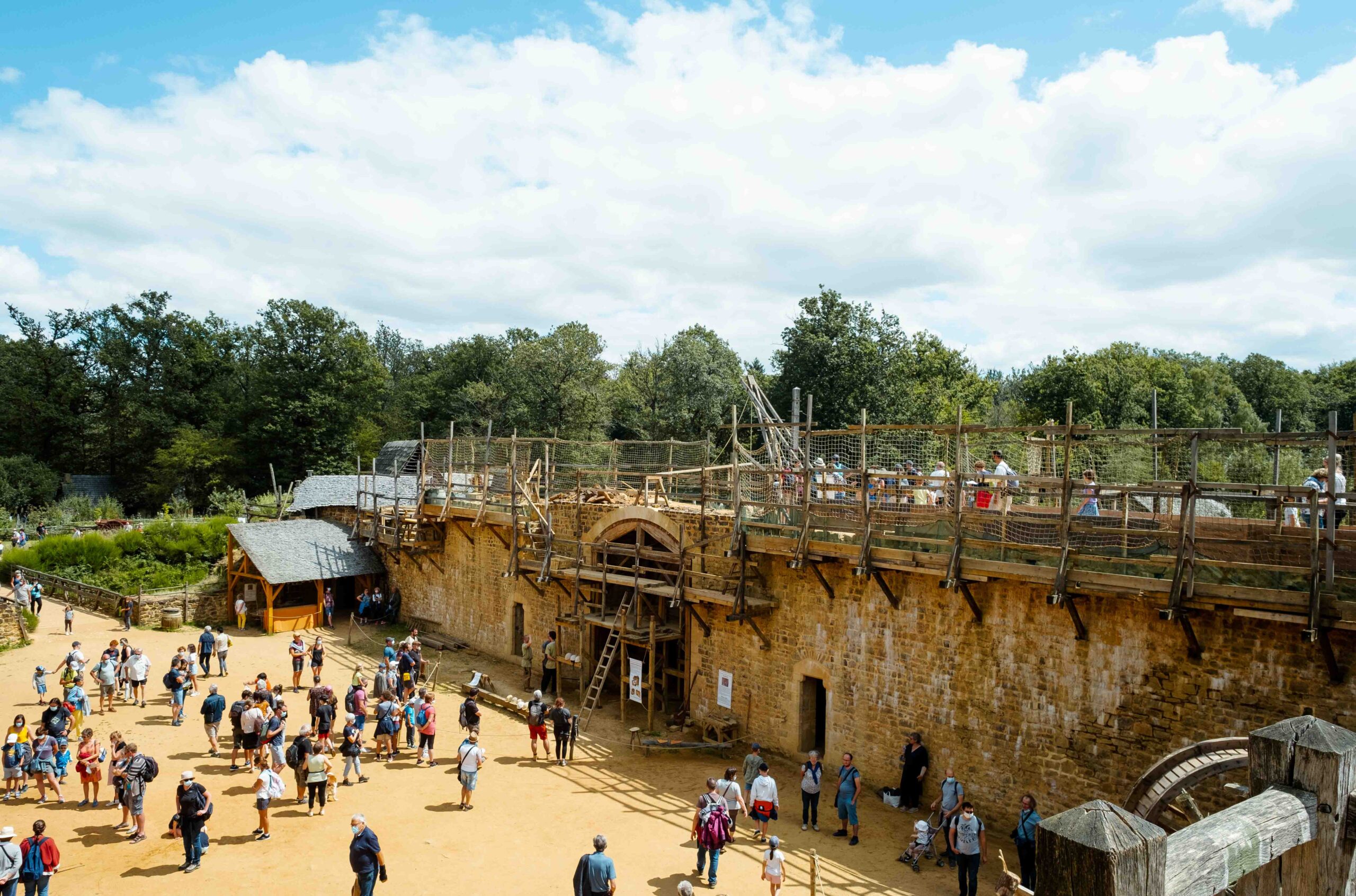
Who’s behind this project?
That kind of patience must exist in volumes in the people who conceived the Guédelon construction and put it in motion. The idea actually came from another castle site not far from this one. In 1996, a team of architects and archeologists working on the chateau at Saint-Fargeau, about 15 minutes away, discovered that the elegant 17th-century classic façade you see there today actually conceals a much older medieval castle beneath its walls. The team suggested to Michel Guyot, the owner of Saint-Fargeau, that it would be “amazing” to rebuild that original structure.
Now, Michel Guyot himself had years of experience at restoring other old castles, and this proposal triggered something in his imagination. He hired more “enthusiasts” and set about finding the site, raising the money, and assembling the teams of skilled craftsmen necessary to transform a barren site into the beautiful little castle that is still emerging today, 26 years later. (You can click HERE to see the detailed chronology of the work done so far. The whole story is charmingly told in this short animation – in French but with English subtitles.)
When will Guédelon be “finished”?
The short answer is “we don’t know for sure.” A quick internet search reveals a couple of possibilities, suggesting it might be done in 2023 or (more commonly) 2030, but signs on the site describe it as “a story without an ending”. There’s no obvious interest in finishing the castle anytime soon since the open-air laboratory employs so many craftspeople and attracts more than 300,000 visitors who come to see the work in progress every year. And much work remains to be done, even on the main body of the chateau itself.
But logically that construction WILL come to an end. You can imagine, though, that there remain years – maybe decades – of work ahead to finish all the related outbuildings or even to build a small medieval village outside the walls of the castle.
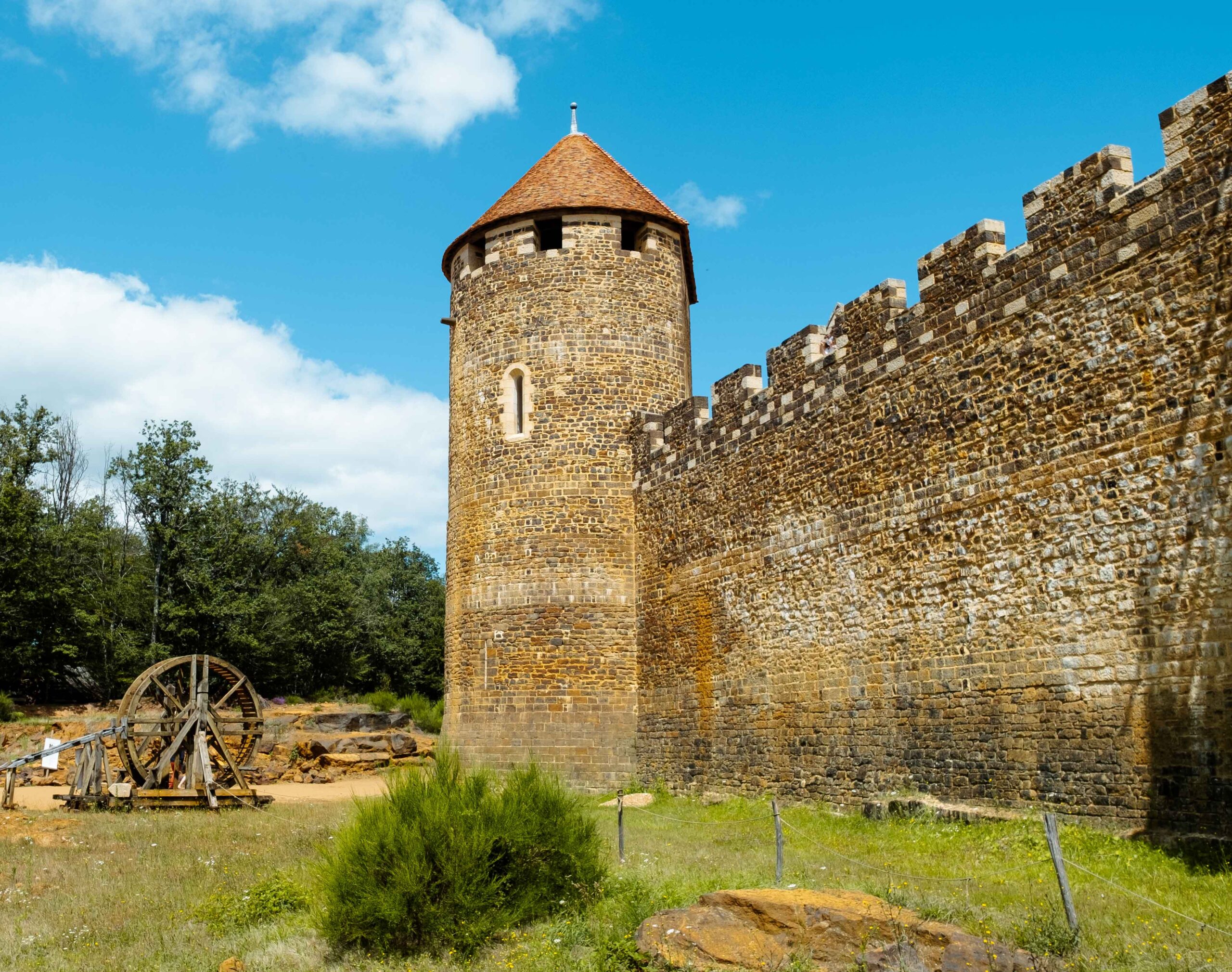
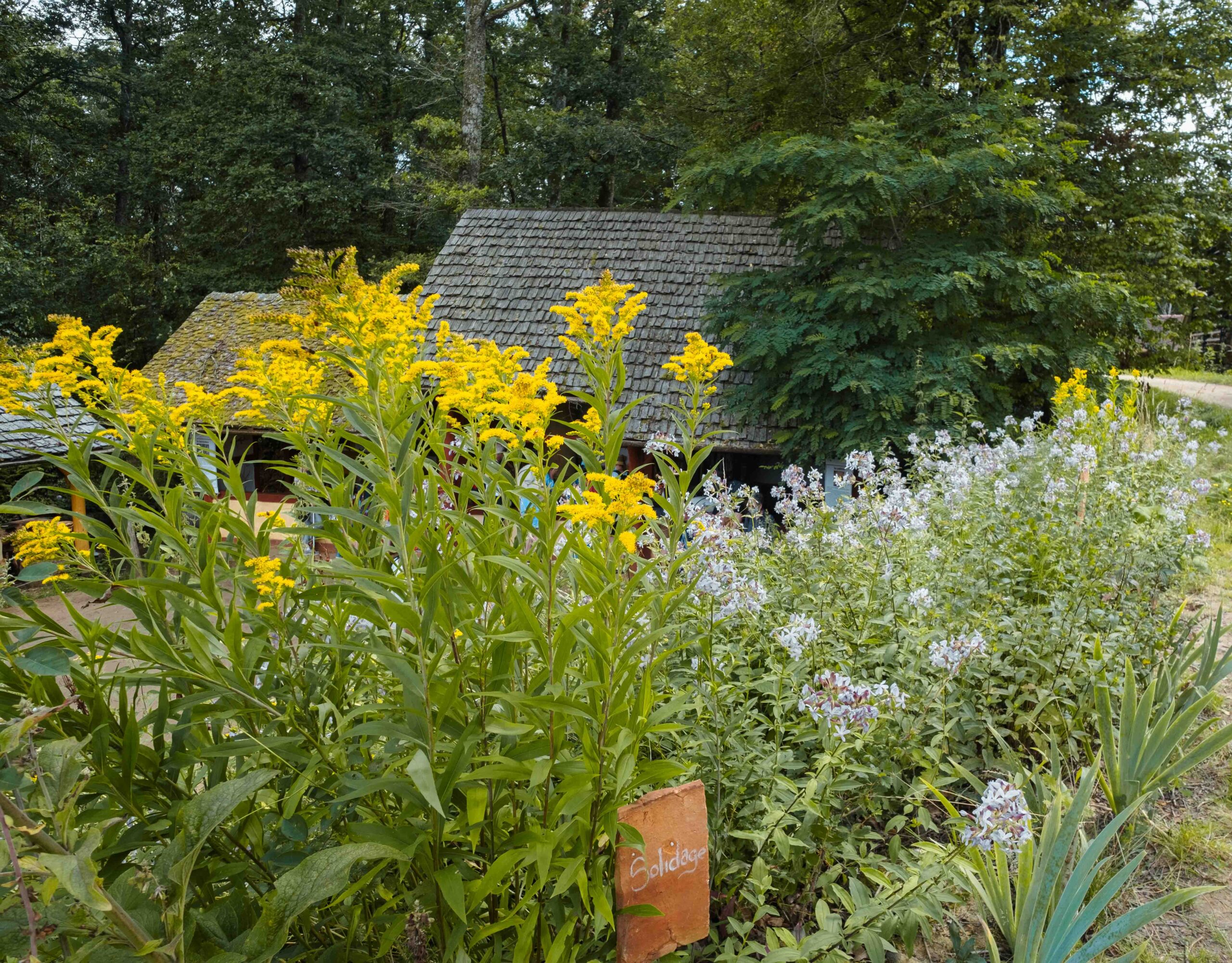
Visiting Guédelon today
The building site is closed for the winter, but will reopen on April 2, 2022, and stay open until early November. If you have any chance to go see it, I recommend it as one of the most interesting and worthwhile day trips I’ve ever experienced in France.
It’s a fascinating project in its conception (which required that formidable leap of imagination on the part of Michel Guyot and his team), and it’s fascinating in its everyday execution. In their rigorous adherence to using only the tools, materials, and processes that would have existed in 1288, the Guédelon team discovers new problems and new solutions almost every week. It’s both the craft and the science of “experimental archeology” – figuring out how much lime had to be in the mix when mortar was made, how to make a stone hammer that would last through a long day of work, and a thousand other everyday concerns.
The team had to learn, too, the art of medieval project management. At what point in the year do you have to stop laying new mortar so that it cures correctly when the weather turns cold? What can teams be working on when it’s too wet or too dry to work on the main construction? How many stone masons can productively work on a single wall at one time?
In short, the 21st-century team on this site in the deep heart of France must learn every day what their ancestors knew from generations of trial and error. My day at Guédelon fed my long-held interest in medieval architecture, but even more than that, it was an intensely rewarding introduction to the whole idea of experimental archeology, summarized perfectly in the project’s motto: “Construire pour comprendre” – “build to understand”.
Have you already visited Guédelon? Or have you seen other "living architecture" sites in your travels around France? What interests you most about these places? Which ones do you recommend to others? Please take a second to share your experiences in the comments section -- and please share this post with someone else who's interested in the people, places, history, and culture of France.
Unless otherwise noted, all photos in this post are copyright © 2021 by Richard L. Alexander
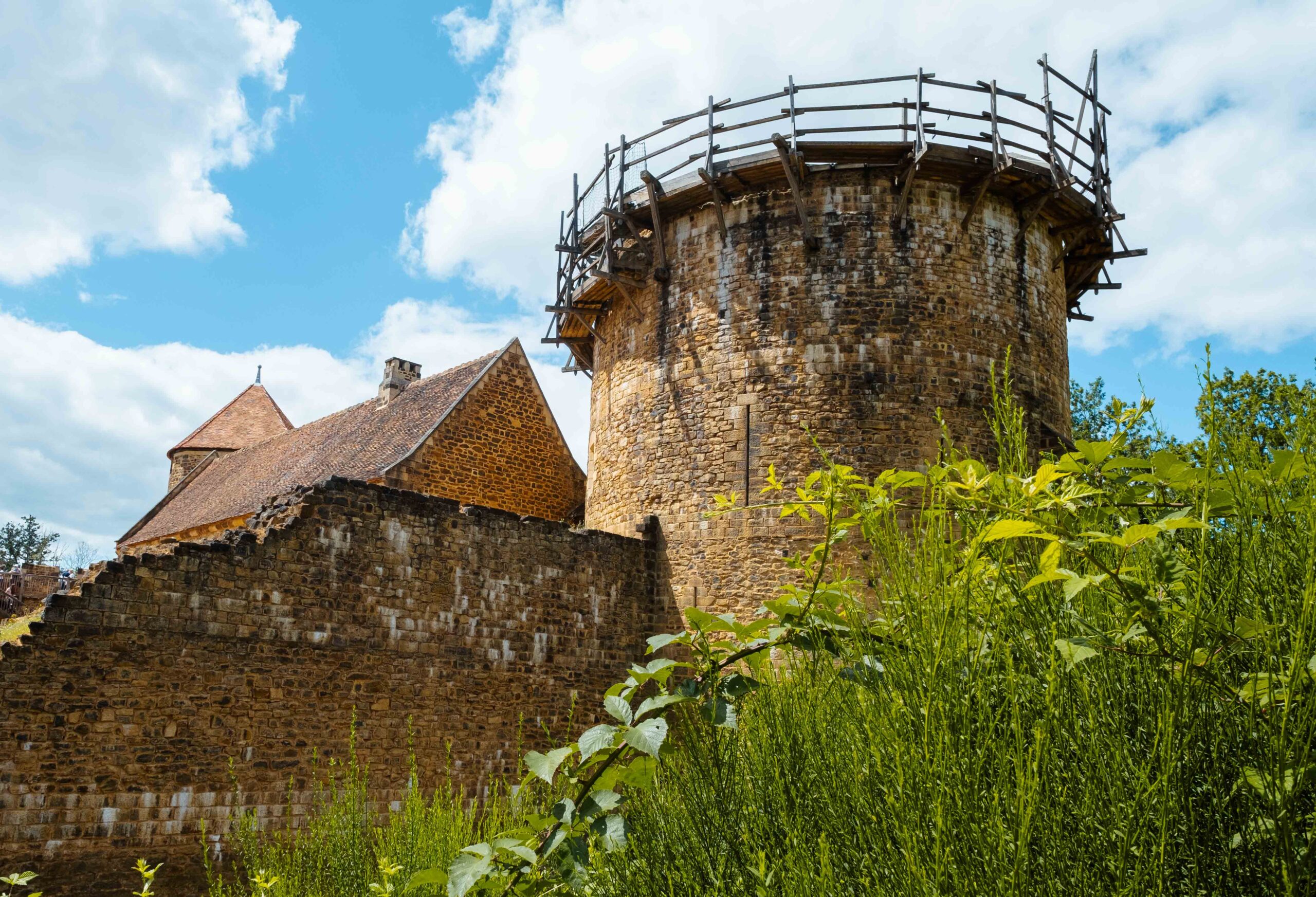
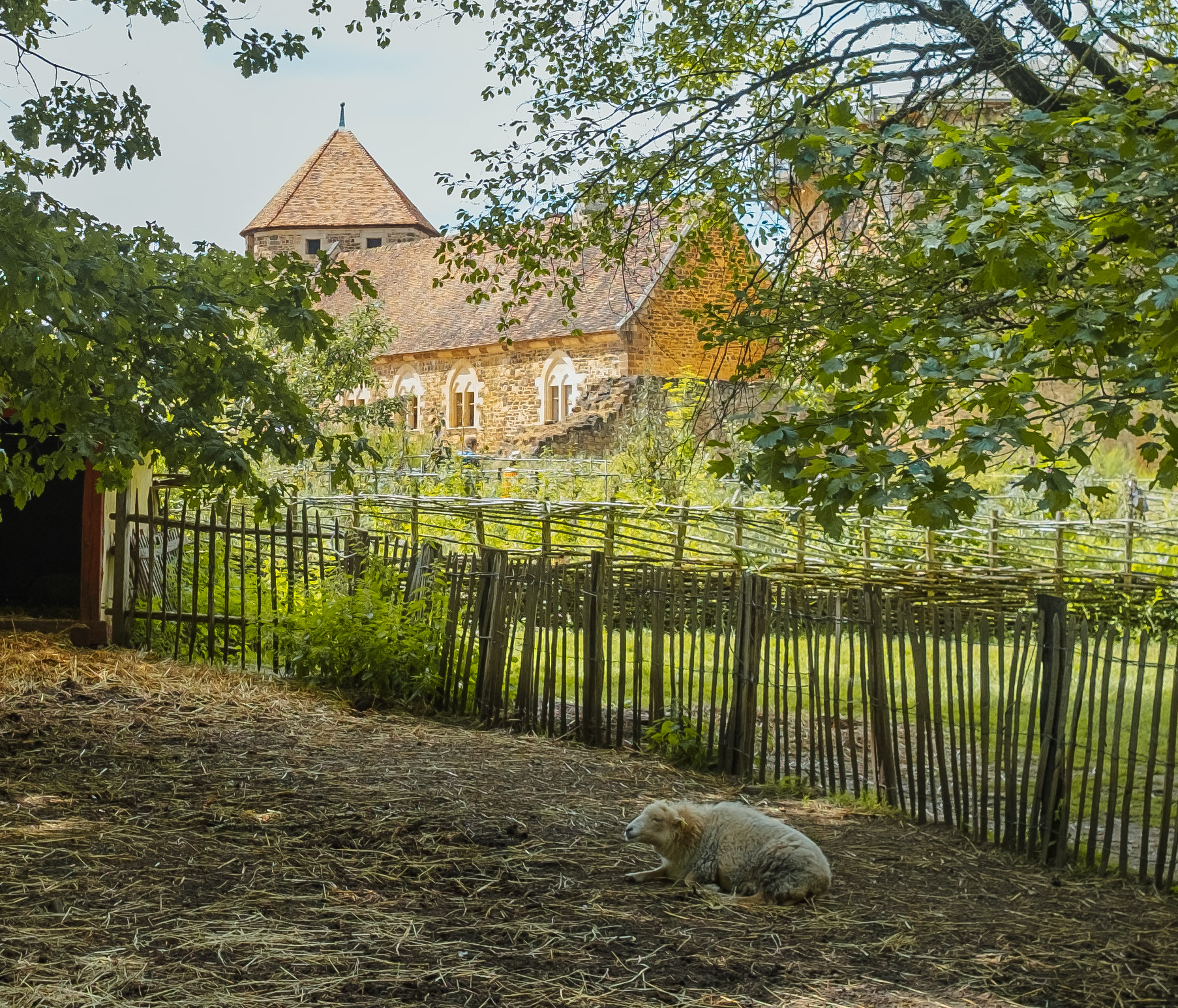
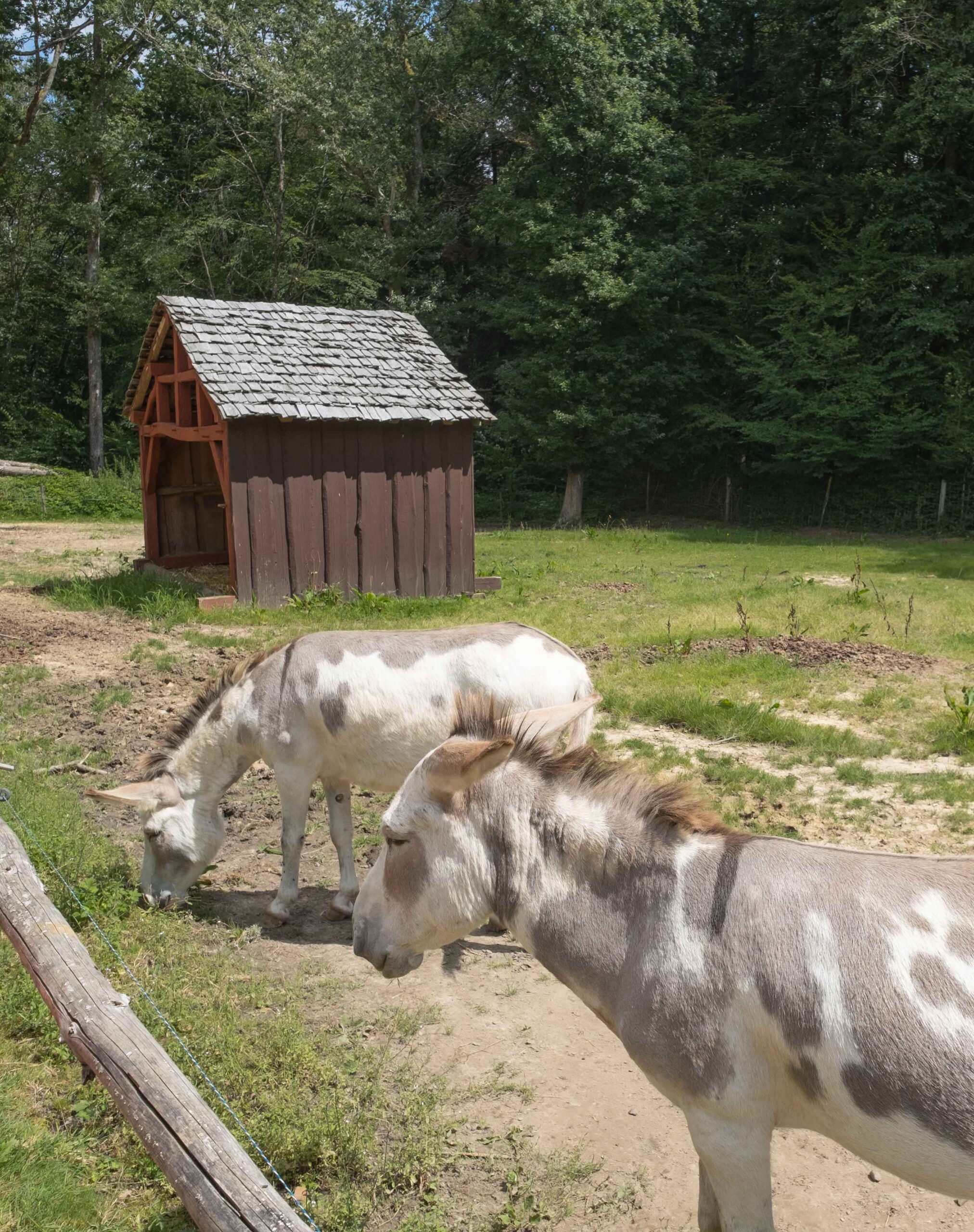
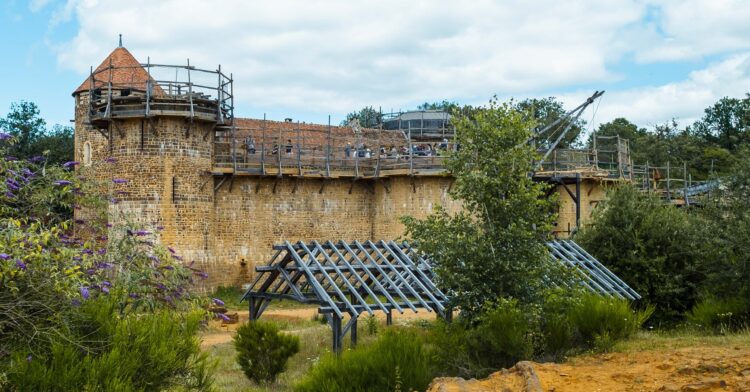

Wow – a bit bonkers, but totally valid as a way to understand history by living it. I would love to visit this place.
It IS a great place to visit; I hope you get the chance. I talked with a couple of the craftspeople who had worked for much of their adult lives as “conventional” carpenters, and they both went on and on about how much more interesting and gratifying this work is to them, even though they’re just making thousands of individual shingles for the roof right now. They feel they’ve made a connection with history they couldn’t have done any other way — as you say, understanding it by living it! Thanks, as always, for writing!